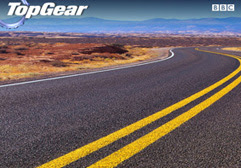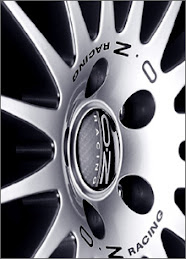
his is the 2009 Chevrolet Corvette ZR1, officially revealed for all the world to see. Powered by a supercharged LS9 6.2L small-block engine, the ZR1 hasn't even received an official horsepower number from the engineers toiling away at the General. All Harlan Charles, project manager for the Corvette team was able to tell us last week was the new high-powered 'Vette engine is "capable of producing at least 100 horsepower per liter. That's at least 620 horsepower, and approximately 595 lb.-ft. of torque." Chevrolet wasn't even able to give us a time on the 0-60. Charles was only willing to say "it's in the low three seconds." The small-block engine under the hood is only able to hit those massive numbers due to the addition of the positive-displacement Roots-type supercharger with a new, four-lobe rotor design plus an integrated charge cooling system that reduces inlet air temperature for increased performance. That's the "go" end, but the "whoa" end is just as impressive. The ZR1 gets some simply huge carbon-ceramic, drilled disc brake rotors. They're so big and are required to be so powerful they're using the same 15-inch-diameter discs found on the front of a Ferrari 599. Except on the ZR1, they go on the 20" tires in the rear. In the front, they'll be getting even larger 15.5-inch-diameter rotors, simply breathtaking to see up-close. This new Corvette used to be called the "Blue Devil", Z07, and a few other names while in the preparation stages before being announced as the ZR1 to the public
 The ZR1 is built on the same aluminum-intensive chassis as the Corvette Z06 and features similar independent SLA front and rear suspensions, with aluminum upper and lower control arms. Where the ZR1 differs is the suspension tuning, which was optimized for the car's steamroller-wide front and rear tires.
The ZR1 is built on the same aluminum-intensive chassis as the Corvette Z06 and features similar independent SLA front and rear suspensions, with aluminum upper and lower control arms. Where the ZR1 differs is the suspension tuning, which was optimized for the car's steamroller-wide front and rear tires.Magnetic Selective Ride Control is standard and tuned specifically for the ZR1. The system's ability to deliver a compliant ride with nearly instantaneous damping adjustments enabled engineers to develop a surprisingly supple ride quality in a supercar that still delivers cornering grip of more than 1g.
From a high-performance perspective, Magnetic Selective Ride Control helps the rear axle remain planted during launch for smooth, hop-free acceleration. It also helps suppress axle movement when cornering on broken or uneven pavement.

























No comments:
Post a Comment